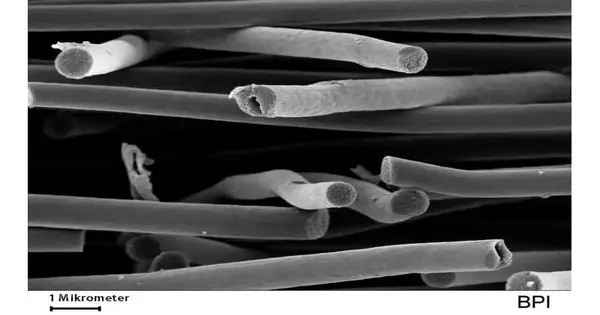Researchers at the University of Bayreuth present new electrospun nonwovens with an unusual combination of high electrical conductivity and incredibly low thermal conductivity in Science Advances.
The nonwovens are a major advancement in materials science because they make it possible to separate thermal and electrical conductivity using a straightforward material concept. The nonwovens, which are produced using an electrospinning process and a carbon and silicon-based ceramic, are well suited for use in electronics and energy technology, among other cutting-edge fields of technology. On a large scale, they are capable of being produced and processed at a low cost.
High electrical conductivity is typically paired with high thermal conductivity, and low electrical conductivity is typically paired with low thermal conductivity. A growing trend in many high-tech industries, though, is the interest in multifunctional materials that combine good electrical performance with low thermal transport.
“We are certain that our innovative fibers are appropriate for a variety of applications, such as energy management, battery-powered electromobility, smart textiles, or aircraft.”
Prof. Dr. Seema Agarwal, professor of macromolecular chemistry at the University of Bayreuth.
Even though many techniques have been developed for materials such as dense inorganic materials, conjugated polymers, and alloys, achieving extremely low thermal conductivity while also having high electrical conductivity remains a significant challenge for flexible, foldable materials.
A novel idea has been found by the research team at the University of Bayreuth to meet this challenge: new electrospun nonwovens made of carbon and silicon-based ceramics and composed of fibers with a sea-island type nanostructure and a diameter between 500 and 600 nanometers.
Every fiber has a carbon matrix that is uniformly distributed with nanoscale ceramic phases. The particles have opposing, overlapping effects and create tiny “islands” in the sea of carbon matrix. High electrical conductivity is made possible by the carbon matrix, which also facilitates electron transport in the fibers. Nano-sized silicon-based ceramics, on the other hand, limit the ease with which thermal energy can spread.
This is so because, in contrast to the nonwoven’s small pores, the interface between the nano-sized ceramic and the carbon matrix is very high. The smallest physical units of vibrations induced by thermal energy, known as phonons, are as a result strongly scattered. There is no constant, directed heat flow.
A comparison with more than 3,900 materials of all types, including ceramics, carbons, natural materials, synthetic polymers, metals, glasses, and various composites, highlights the unusual combination of high electrical and extremely low thermal conductivity. In comparison to those other materials, electron transport and thermal energy insulation were more closely coupled in the new electrospun composite fiber material.
“High electrical conductivity, thermal insulation that is familiar from polymer foams, non-flammability, and heat resistance that are characteristics of ceramics are all highly desirable multifunctional properties that our electrospun nonwovens combine.” The fibers were created using commercial polymers and are based on a straightforward material concept, according to the first author, Dr. Xiaojian Liao, a postdoctoral researcher in macromolecular chemistry at the University of Bayreuth.
“We are confident that our new fibers are suitable for a variety of application areas, such as energy management, battery-powered electromobility, smart textiles, or aerospace,” says Prof. One of the corresponding authors of this new study is Dr. Seema Agarwal, a professor of macromolecular chemistry at the University of Bayreuth. The success of this work can be attributed to the multidisciplinary team at the University of Bayreuth, which has specialists in electrospinning, physical chemistry, ceramics, polymers, and electron microscopy.
More information: Xiaojian Liao et al, Extremely low thermal conductivity and high electrical conductivity of sustainable carbon ceramic electrospun nonwoven materials, Science Advances (2023). DOI: 10.1126/sciadv.ade6066





